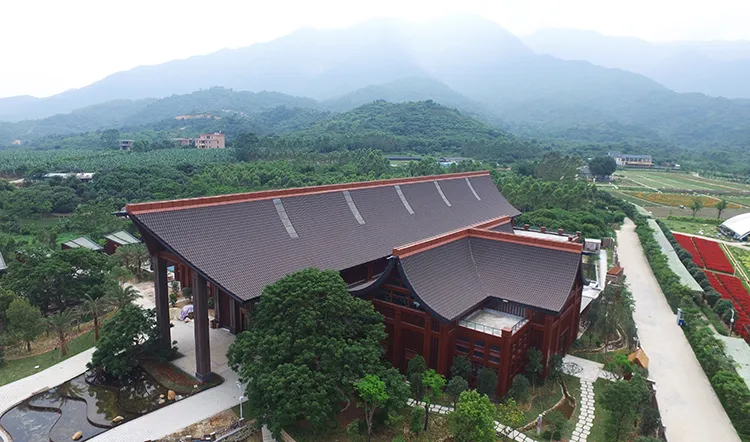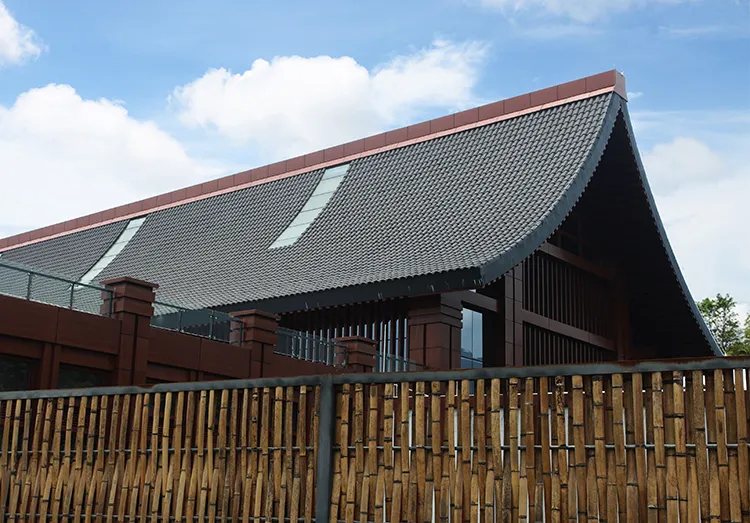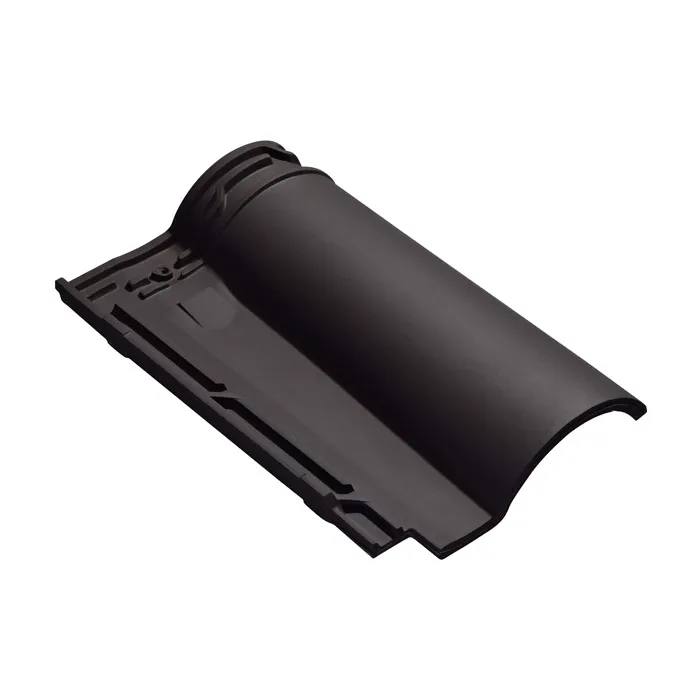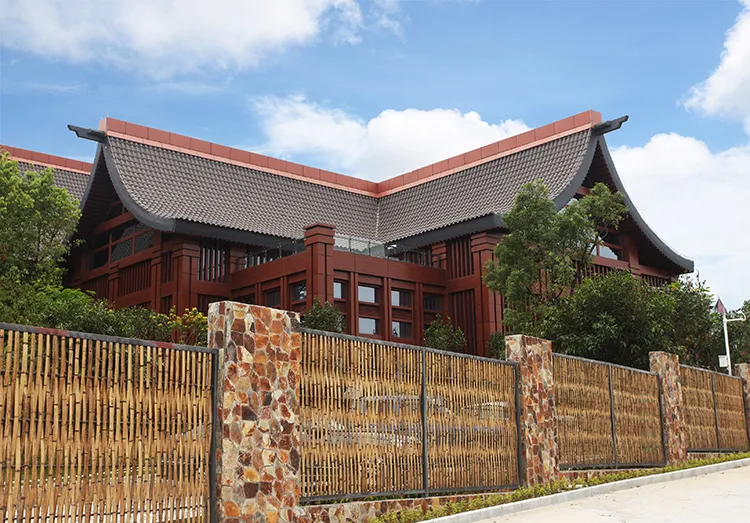Clay roof tiles have become the preferred roofing material for many buildings due to their unique aesthetics, durability and environmental performance. Whether it is a traditional old-fashioned building or a modern high-end residence, clay roof tiles are widely used around the world due to their excellent performance. However, in some cases, clay roof tiles may crack, which not only affects the appearance of the roof, but also may cause a decrease in waterproof performance and even pose a potential threat to the safety of the building.
So, why do clay roof tiles crack? What are the reasons for cracking? How can we prevent and repair these problems? This article will explore the reasons for cracking of clay roof tiles and provide effective solutions for the majority of owners.

What are the characteristics of clay roof tiles?
Before exploring the reasons for cracking of clay roof tiles, we first need to understand the basic characteristics of clay roof tiles. Clay roof tiles are made of clay, sand and other natural minerals fired at high temperatures. Due to the special manufacturing process, clay roof tiles have natural color, texture and good weather resistance. Its common advantages include:
● Strong durability: Clay roof tiles can withstand harsh weather conditions such as high temperature, severe cold, wind and rain, and their service life can usually reach more than 50 years.
● Good fire resistance: Since clay itself is not flammable, clay roof tiles have high fire resistance and are suitable for use in areas with high fire risk.
● Strong aesthetics: Clay roof tiles have natural color and rich texture, which can be integrated with buildings of different styles and have high decorative value.
● Strong environmental protection: Clay roof tiles are made of natural mineral materials, meet the requirements of green buildings, and have good environmental protection performance.
Although clay roof tiles have so many advantages, it may still have some problems such as cracking and breakage during long-term use. Understanding the root causes of these problems is the key to ensuring the long-term use of clay roof tiles.

What are the common reasons for cracking of clay roof tiles?
Cracking of clay roof tiles is not an accidental phenomenon, it is often the result of the combined effect of multiple factors. We can analyze the reasons for cracking of clay roof tiles from the following aspects.
1. Thermal expansion and contraction caused by temperature changes
Temperature changes are a major factor that causes clay roof tiles to crack. As roof tiles are exposed to sunlight, temperature changes can cause tiles to expand and contract. Especially in areas with large temperature differences between day and night, clay roof tiles will expand and contract due to temperature changes. Over time, this repeated expansion and contraction can cause tiny cracks in the tiles, or even obvious cracking.
In the cold winter, when the temperature is low, the contraction of clay roof tiles can cause the joints between tiles to misalign, which in turn exacerbates the cracking. In the summer, strong sunlight causes the tiles to expand. If the temperature difference is large, the surface of the tiles may crack due to excessive stress.
2. Material quality issues
The quality of clay roof tiles directly affects their durability. If inferior clay raw materials are used in the manufacturing process or the production process is improper, the density and strength of the tiles will be insufficient, and they will easily crack during use. High-quality clay roof tiles tend to have higher density and compressive strength, and can better cope with external pressure and temperature changes.
In addition, some inferior clay roof tiles may form cracks on the surface due to improper temperature control during the firing process. Such cracks cannot be effectively treated after installation. Over time, these cracks may expand into obvious cracks, eventually leading to tile damage.
3. Improper installation
Improper installation methods may also cause cracking of clay roof tiles. For example, during installation, if the tiles are not properly docked or not firmly fixed, it may cause the tiles to shift or deform when subjected to external forces (such as wind or water accumulation). This displacement will cause uneven pressure on the tiles, causing cracking problems.
In addition, failure to consider the impact of temperature changes on clay roof tiles during installation may result in the gaps between tiles being too small to accommodate thermal expansion and contraction. Long-term pressure will cause cracks on the surface of the tiles, eventually leading to cracking.
4. External environmental influences
Clay roof tiles are easily affected by the external environment, especially in extreme weather conditions, such as heavy rain, ice and snow, and strong winds, which may accelerate the damage of tiles. Especially in cold regions, when freezing and thawing occur alternately, water accumulates in the cracks of tiles, expands in volume when frozen, further widens the cracks, and eventually causes the tiles to crack.
Strong winds can exert tremendous pressure on clay roof tiles, especially when tiles that are not firmly installed are easily blown up or misaligned by the wind, which puts additional pressure on the tiles, causing cracking or breakage.
5. Long-term use and aging
Clay roof tiles will inevitably age after long-term use. Over time, the surface of roof tiles may gradually become fragile due to long-term exposure to ultraviolet rays and climate change. Aged tiles are prone to cracking when they encounter large external forces or temperature changes.
In addition, long-term moisture erosion and water accumulation may also cause tiles to gradually become brittle, especially on roofs with poor drainage, where moisture cannot be discharged in time and remains on the surface of tiles for a long time, causing them to gradually deteriorate and crack.
6. Structural problems
Structural problems of the roof may also cause cracking of clay roof tiles. For example, deformation or uneven loading of the roof’s frame or supporting structure may cause uneven pressure on the clay roof tiles, causing cracking in some tiles. This problem may be exacerbated by gradual deformation of the structure, especially over the long life of the roof.

How to prevent and repair cracking of clay roof tiles?
Although there is a risk of cracking in clay roof tiles, proper installation, regular inspection and maintenance can effectively reduce this risk and extend the life of the roof.
1. Choose high-quality tiles
Choosing high-quality clay roof tiles is the first step in preventing cracking problems. Consumers should choose products from reputable manufacturers to ensure the quality and durability of the tiles. High-quality tiles usually have higher density and compressive strength and are less prone to cracking.
2. Ensure proper installation
During installation, ensure that the gaps between clay roof tiles are appropriate to accommodate changes in thermal expansion and contraction. Installers should perform correct installation according to the manufacturer’s regulations to ensure that the tiles are firmly fixed to avoid cracking caused by improper installation. At the same time, the appropriate fixing nails and adhesives should be used during installation to ensure that the tiles are stable.
3. Regular inspection and maintenance
Inspecting the clay roof tiles regularly, especially after extreme weather, can help identify problems and repair them in time. If some tiles are found to be cracked or damaged, they should be replaced in time to avoid further damage.
Clean the roof regularly to ensure that the drainage system is unobstructed, avoid long-term stagnation of water on the surface or in the gaps of the tiles, and reduce the erosion of the tiles by water.
4. Avoid external impact
Try to avoid external impact on the clay roof tiles, especially when working on the roof, be careful to avoid heavy objects falling or improper stepping on the tiles.
5. Repair damaged tiles
If the tiles are found to be cracked or damaged, they should be repaired in time. Repair methods include replacing the damaged tiles or applying sealant to the cracks. For large-scale damage, consider replacing the tiles in the entire area to ensure the integrity and waterproofness of the roof.

As a leading factory-direct supplier, Rongguan provides customized building materials that elevate the aesthetics and functionality of any project. From quartz surfaces to roof tiles, we are known for delivering high-quality products at competitive prices. With a strong export presence in Europe and Southeast Asia, our wholesale options ensure value for international buyers. Get your discounted quote today!

